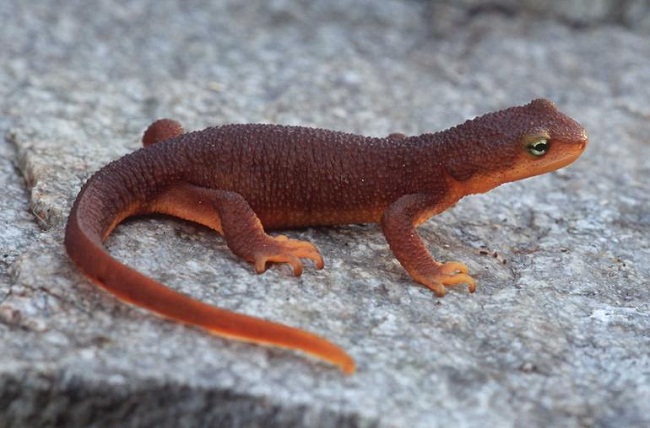Re: Herpetology B/C
Posted: January 9th, 2018, 4:54 pm
Yeah all correct, your turn. 

To be fair, UGA is not a great representation of the event. UGA tests are perennially poorly written.dvegadvol wrote:I do appreciate the effort, but this specific Trionychidae, Pelochelys cantorii, is endemic only to Southeast Asia.
My understanding is that we are to study reptiles and amphibians from the US or North America.
Also, we aren't required to know common names, unless I'm mistaken, again...
This event has problems of it's own; a large number of Families and Genera are extremely out-dated or conflicted]; some haven't been used since the early 1980s.
Look at the order on the National List - it's directly drawn from the 1979 Edition of the National Audubon Society Field Guide to Reptiles and Amphibians. That appears to be a bit lazy, or maybe it was simply drawn from the last time SO had this event.
We only have to look to the U of Ga invitational to see how messed up this competition can get. 14 stations at that competition, 11 out of 14 stations were completely foreign species, 1 was introduced to the US, and 2 were native to North America. Well-crafted test and questions, but on subjects no one was prepared for. I can't imagine how frustrating that must have been for the participants.
This should have been constructed around certain genera with limited numbers of species within them - pretty easy to do.
There's a real "slapped together at the last moment feel" to the present competition, imho...
I'm guessing he meant common name based on the National SO list which would be soft shelled turtle and not the species common name unless I am mistaken. As Unome said, there is nothing in the rules stating that the specimens must be those native to NA/USA but I submitted an FAQ asking this about two months ago to clarify and have received no response.Unome wrote:To be fair, UGA is not a great representation of the event. UGA tests are perennially poorly written.dvegadvol wrote:I do appreciate the effort, but this specific Trionychidae, Pelochelys cantorii, is endemic only to Southeast Asia.
My understanding is that we are to study reptiles and amphibians from the US or North America.
Also, we aren't required to know common names, unless I'm mistaken, again...
This event has problems of it's own; a large number of Families and Genera are extremely out-dated or conflicted]; some haven't been used since the early 1980s.
Look at the order on the National List - it's directly drawn from the 1979 Edition of the National Audubon Society Field Guide to Reptiles and Amphibians. That appears to be a bit lazy, or maybe it was simply drawn from the last time SO had this event.
We only have to look to the U of Ga invitational to see how messed up this competition can get. 14 stations at that competition, 11 out of 14 stations were completely foreign species, 1 was introduced to the US, and 2 were native to North America. Well-crafted test and questions, but on subjects no one was prepared for. I can't imagine how frustrating that must have been for the participants.
This should have been constructed around certain genera with limited numbers of species within them - pretty easy to do.
There's a real "slapped together at the last moment feel" to the present competition, imho...
There's nothing in particular that restricts the event to US/North America, though I would agree that those are worth focusing on more when studying.
3.f implies that questions asking for common names can be given.
Taxonomic problems are eternal in SO. I expect there's probably some underlying difficulty in getting a good taxonomy, but there are definitely problems with the current list's taxonomy.
As the rules are written, identification should only be asked to the level listed on the official list (rule 3.d). Per the rules, an image of a skink can be of any species of skink in the world, but identification of the image can only ask about either the specific genus Eumeces or the family Scincidae as a whole.dvegadvol wrote:If indeed we can read the rules as allowing any herp, that's definitive proof that this thing was put together without any thought.
For example, there are more than 1,500 species of skinks in at least 87 genera worldwide...
In the US there are 15 species in three genera.
I find it hard to believe that the event writers would expect 5th-12th grade students to be able to identify any one of 1,500+ skinks by common name.
While I agree that in the loosest possible interpretation of the rules you could be asked to identify some obscure skink from Papua New Guinea, it just wouldn't be a prudent or reasonable measure of knowledge...
And why would the SO Herpetology Training handout suggest only these two books as reference?
Peterson Field Guides: A Field Guide to Reptiles & Amphibians: Eastern and Central North
America, 4th Edition by Roger Conant and Joseph T. Collins (2016)
and
A Field Guide to Western Reptiles and Amphibians, 3rd Edition by Robert C Stebbins (2003)
They're both only specific to North America.
If it's a worldwide test winners will be crowned completely at random.
Adding on to what Unome said, if they ask for the common name, you can just say “Skink” and not “Blue Tailed Skink”.Unome wrote:As the rules are written, identification should only be asked to the level listed on the official list (rule 3.d). Per the rules, an image of a skink can be of any species of skink in the world, but identification of the image can only ask about either the specific genus Eumeces or the family Scincidae as a whole.dvegadvol wrote:If indeed we can read the rules as allowing any herp, that's definitive proof that this thing was put together without any thought.
For example, there are more than 1,500 species of skinks in at least 87 genera worldwide...
In the US there are 15 species in three genera.
I find it hard to believe that the event writers would expect 5th-12th grade students to be able to identify any one of 1,500+ skinks by common name.
While I agree that in the loosest possible interpretation of the rules you could be asked to identify some obscure skink from Papua New Guinea, it just wouldn't be a prudent or reasonable measure of knowledge...
And why would the SO Herpetology Training handout suggest only these two books as reference?
Peterson Field Guides: A Field Guide to Reptiles & Amphibians: Eastern and Central North
America, 4th Edition by Roger Conant and Joseph T. Collins (2016)
and
A Field Guide to Western Reptiles and Amphibians, 3rd Edition by Robert C Stebbins (2003)
They're both only specific to North America.
If it's a worldwide test winners will be crowned completely at random.
You also have to remember the proctors are not out to get you. They will not go out and choose a specimen they themselves can not identify, that would just be simply cruel and also risky since it could be one not even on the list. Because of this they will often go to the same sources and use the same photos that we all have access to on the internet to make their tests. If you feel they will be testing on worldwide specimens go ahead and prepare for that.dvegadvol wrote:If indeed we can read the rules as allowing any herp, that's definitive proof that this thing was put together without any thought.
For example, there are more than 1,500 species of skinks in at least 87 genera worldwide...
In the US there are 15 species in three genera.
I find it hard to believe that the event writers would expect 5th-12th grade students to be able to identify any one of 1,500+ skinks by common name.
While I agree that in the loosest possible interpretation of the rules you could be asked to identify some obscure skink from Papua New Guinea, it just wouldn't be a prudent or reasonable measure of knowledge...
And why would the SO Herpetology Training handout suggest only these two books as reference?
Peterson Field Guides: A Field Guide to Reptiles & Amphibians: Eastern and Central North
America, 4th Edition by Roger Conant and Joseph T. Collins (2016)
and
A Field Guide to Western Reptiles and Amphibians, 3rd Edition by Robert C Stebbins (2003)
They're both only specific to North America.
If it's a worldwide test winners will be crowned completely at random.
